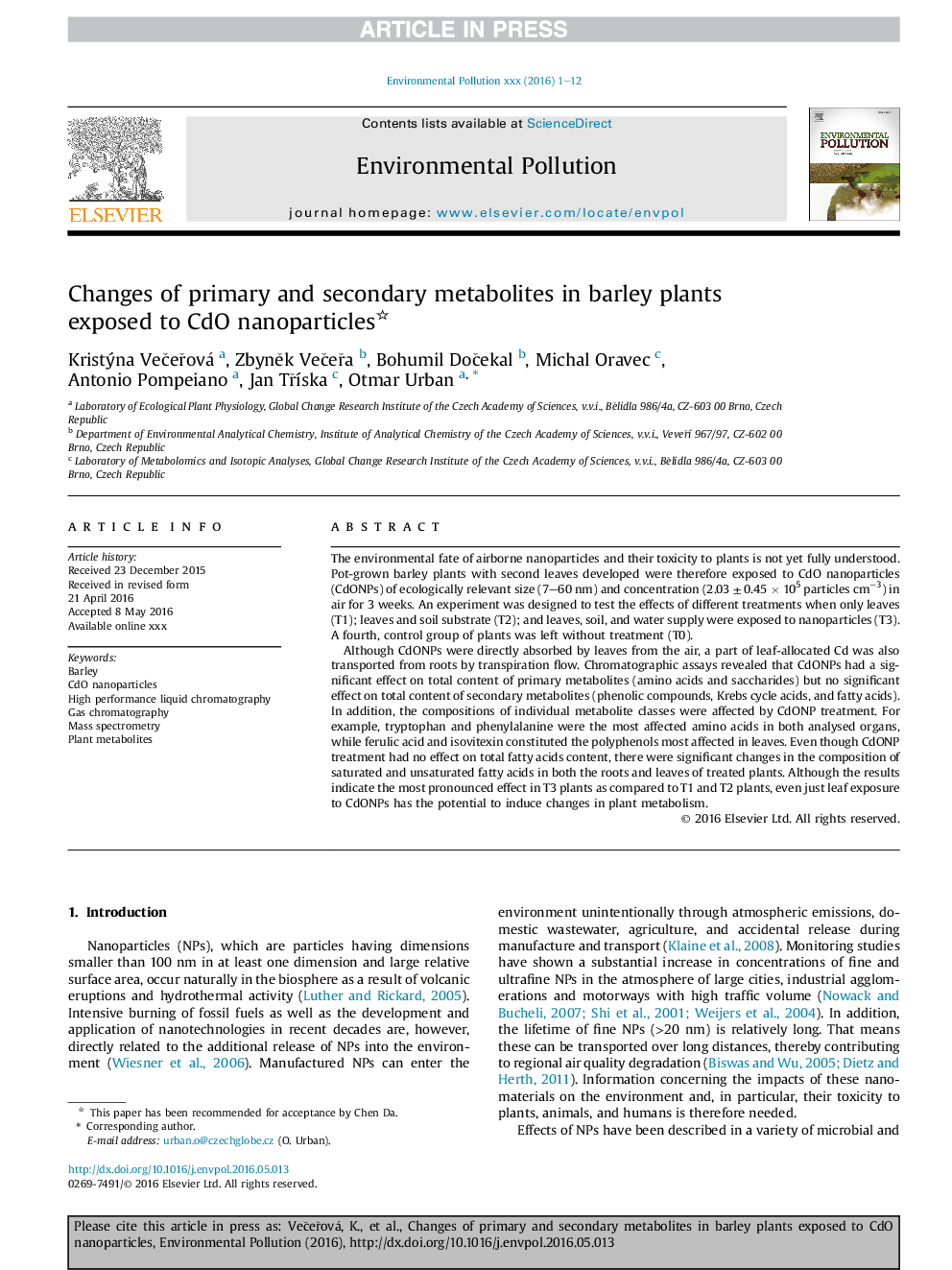| Article ID | Journal | Published Year | Pages | File Type |
|---|---|---|---|---|
| 6314564 | Environmental Pollution | 2016 | 12 Pages |
Abstract
Although CdONPs were directly absorbed by leaves from the air, a part of leaf-allocated Cd was also transported from roots by transpiration flow. Chromatographic assays revealed that CdONPs had a significant effect on total content of primary metabolites (amino acids and saccharides) but no significant effect on total content of secondary metabolites (phenolic compounds, Krebs cycle acids, and fatty acids). In addition, the compositions of individual metabolite classes were affected by CdONP treatment. For example, tryptophan and phenylalanine were the most affected amino acids in both analysed organs, while ferulic acid and isovitexin constituted the polyphenols most affected in leaves. Even though CdONP treatment had no effect on total fatty acids content, there were significant changes in the composition of saturated and unsaturated fatty acids in both the roots and leaves of treated plants. Although the results indicate the most pronounced effect in T3 plants as compared to T1 and T2 plants, even just leaf exposure to CdONPs has the potential to induce changes in plant metabolism.
Keywords
Related Topics
Life Sciences
Environmental Science
Environmental Chemistry
Authors
Kristýna VeÄeÅová, ZbynÄk VeÄeÅa, Bohumil DoÄekal, Michal Oravec, Antonio Pompeiano, Jan TÅÃska, Otmar Urban,
